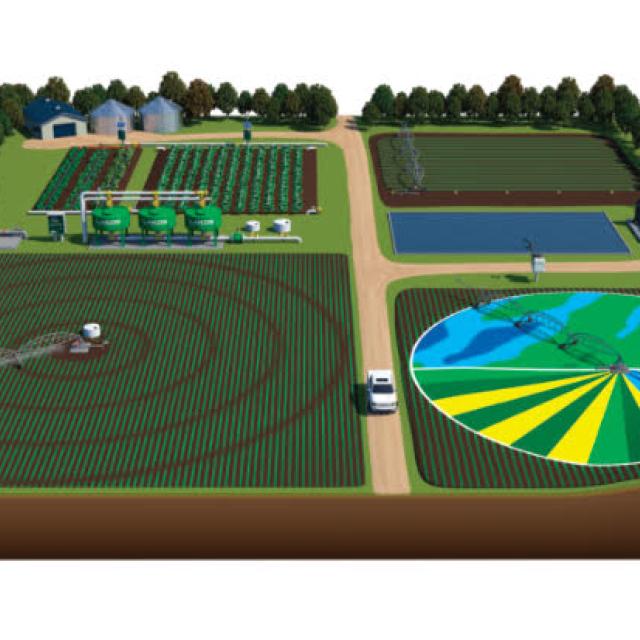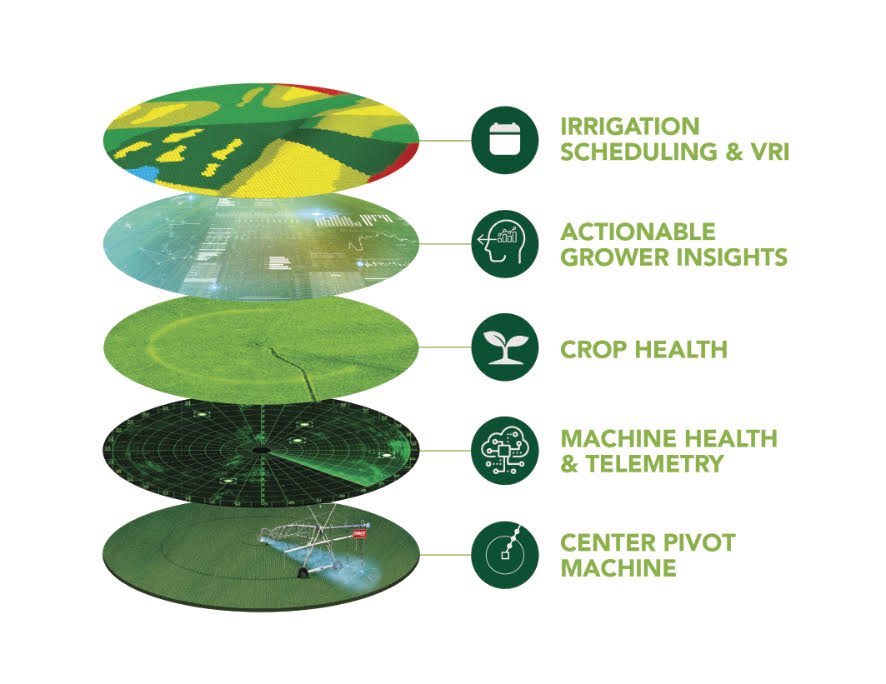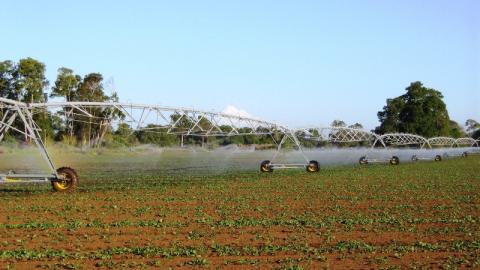If you associate agriculture and irrigation with words like archaic and undeveloped, you are probably not alone. Many people are not aware of how farmers around the world have invested in technology to produce more food using fewer resources and protect the environment. The fact is that the agriculture industry has radically changed over the last few decades, improving scale, yield, and efficiency using natural resources. It is a common priority for all involved in the agriculture business.

Most recently, we’ve seen an expansion of concepts like smart farming, where software for process improvement and IoT (Internet of Things) devices are applied to this agriculture environment. This new era is leading to another revolution in the agriculture industry where connected sensors, analytics, and artificial intelligence could further increase yield and help farmers to produce and improve the efficiency of water and other inputs. As water is a key element of agriculture, the irrigation market has an important role in the future of this connected agriculture.
You might be asking how feasible and potential this market can be. Before discussing the numbers, it is important to understand the scenario ahead of us. In 2022 the global population hit 8 billion people and it is expected to reach 9.7 billion people by 2050, it can be translated into a 70 percent increase in available calories for consumption. For the irrigation market, FAO estimates that irrigated land in developing countries will increase by 34% by 2030, but the amount of water used by agriculture will increase by only 14% thanks to improved irrigation practices. Several players in the industry are already working with the expectation of 40 percent short of global water needs with increasing costs of energy and labor and investing more and more in new technologies.
The benefits of IoT in agriculture and irrigation go beyond data collection or controlling a machine remotely. A smart farming operation can offer complete integration of machines, data collection, and interpretation, offering growers the possibility to use more automated processes and make better decisions. Informed decision-makers can dramatically reduce the usage of natural resources like water. For irrigation, there are many possibilities to make the current system improve even more efficiency, making a better and faster data collection from the crop, soil, and weather to feed modern algorithms that will help farmers’ decisions about water usage. The positive impact of IoT will also hit the systems and their operation, dramatically reducing operational costs and increasing the lifetime of systems. Bring it to reality, in collecting operation data from drip irrigation systems, the technicians will work preventively, checking the water quality, for example, to ensure a longer operation with adequate maintenance and consequently reduce the amount of plastic in the environment. Another example is for center pivots, where farmers can check key elements of the machine, such as the motors, remotely, avoiding trips to the field and, consequently, costs.
The irrigation industry has invested more and more resources on uncountable other tools for data and information collection to be incorporated into the current IoT solutions, visioning a new generation of irrigation that is even more efficient.
Technology has been changing rapidly, and in agriculture, it will be the same with the advance of existing technologies, for example, 5G networks and a new generation of WI-FI. New technologies will emerge, offering low-latency, low-power, and maintenance requirements, for example, High-band 5G. Thinking about an irrigated field, new technologies, for example, will allow easy image transferring and potentializing crop monitoring algorithms that will help farms to meet the expectation for quality foods with less environmental impact.

For irrigation fields, connectivity and available IoT technologies remain a barrier in most countries around the globe. Most IoT technologies run on 3G, 4G, or radio networks, which is enough to enable farmers to run controls on irrigation systems and collect some field data. The cost of hardware has decreased compared to a few years ago and is able to positively impact the farm results within a few months or years.
Farmers have adopted more and more technology in irrigation systems, and some cannot even imagine operating an irrigation system without remote control and monitoring or an algorithm that helps to decide how much water is necessary to apply. Although this number is still increasing, the potential for growth is huge and includes developed areas where irrigation is broadly adopted and regions where irrigation has been recently introduced.
The potential for adoption can only be explored if irrigation professionals and industry help farmers take more out of their investments. Despite the expressive adoption, it is common to see great products or solutions in the field not fully explored because growers are flooded with apps and data that don’t simplify their lives and bring what they really want.
Around the world, farming activity is becoming more challenging, with increasing costs, climate changes, fewer water sources, and tight margins, and offering IoT solutions able to help farmers truly to address the challenges is essential.
The most advanced technology sometimes is not the best fit for every farm or even the moment is not adequate to implement. An illustrative way to understand it is the size and technology of a TV and its installation – If a large and modern TV is installed in a tiny living room, the experience likely won’t be good, despite the onboarding TV’s technology.
Although all the technology and possibilities with IoT, the capacity of the professionals involved in the irrigation market to be present with the producers and closely listen to them continues to be a key element for the best use of existing technologies. Still, it is also fundamental for developing new tools that will really meet the needs of more challenging agriculture. In the age of data in agriculture, will stand out those who understand what really matters and make a difference for farmers and their challenges.

